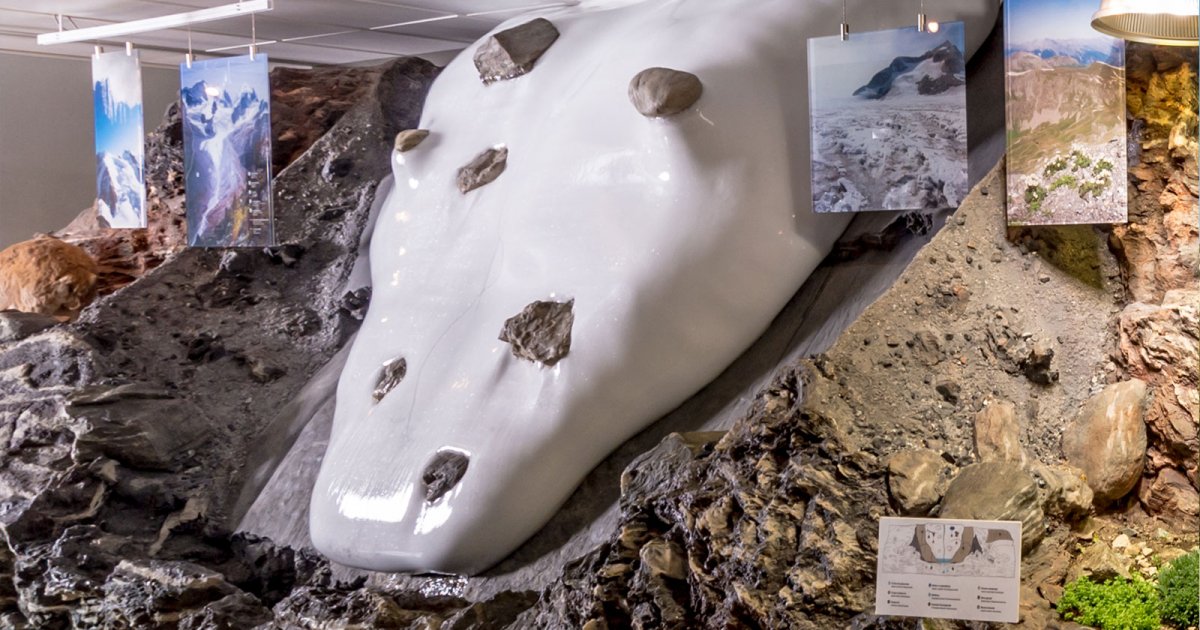MUSE, Tour Part 1
 Language: English / USA
Language: English / USA
The MUSE exhibition is organized on various floors, with each one dedicated to a different aspect of the Trentino ecosystem, from the glaciers of the alpine peaks to woodland life and the geology of the Dolomites, and from the origins of human history to the evolution of life of Earth.
The visit begins on the fourth floor, with an exhibition entirely dedicated to the geological and biological characteristics of the alpine environment. Before you start, you might like to visit the panoramic terrace on the fifth floor and admire the extraordinary 360-degree view over the Adige Valley: it’s unforgettably spectacular.
On the fourth floor, you’ll be welcomed by a 10-meter-long multi-vision space where you can experience what it feels like to fly over the Alps. The glaciers are undoubtedly one of their most complex, fascinating features. To illustrate how glaciers are formed, and their salient features, the MUSE has even reconstructed one using real ice.
Just like in nature, the edges of this glacier are also the unexpected natural habitat of a number of animals despite the extreme conditions. If you’re interested in the extraordinary adaptability of the species that live at high altitude, pay close attention to the multimedia installations that complete this section.
Once you’ve visited the fourth floor, press pause and make your way down to the third floor.
Here you’ll find a virtual mountain trail, where you can admire the extraordinary, miraculous biodiversity of the alpine landscape. Also on display in the MUSE are photographs, interactive virtual surfaces and a fascinating collection of incredibly lifelike, mounted animals.
The installations of the “Maze of alpine biodiversity” will allow you play an active part in the discovery of 26 different natural environments and their extraordinary plant and animal life.
Also on this floor, don’t forget to explore the installations offering a closer study of the surprising strategies that allow animals to adapt to different conditions in different seasons in order to survive.
An interesting fact: none of the mounted animals you can see here was killed for the collection. All the animals died naturally and were found and donated to the MUSE to help the museum study them.



